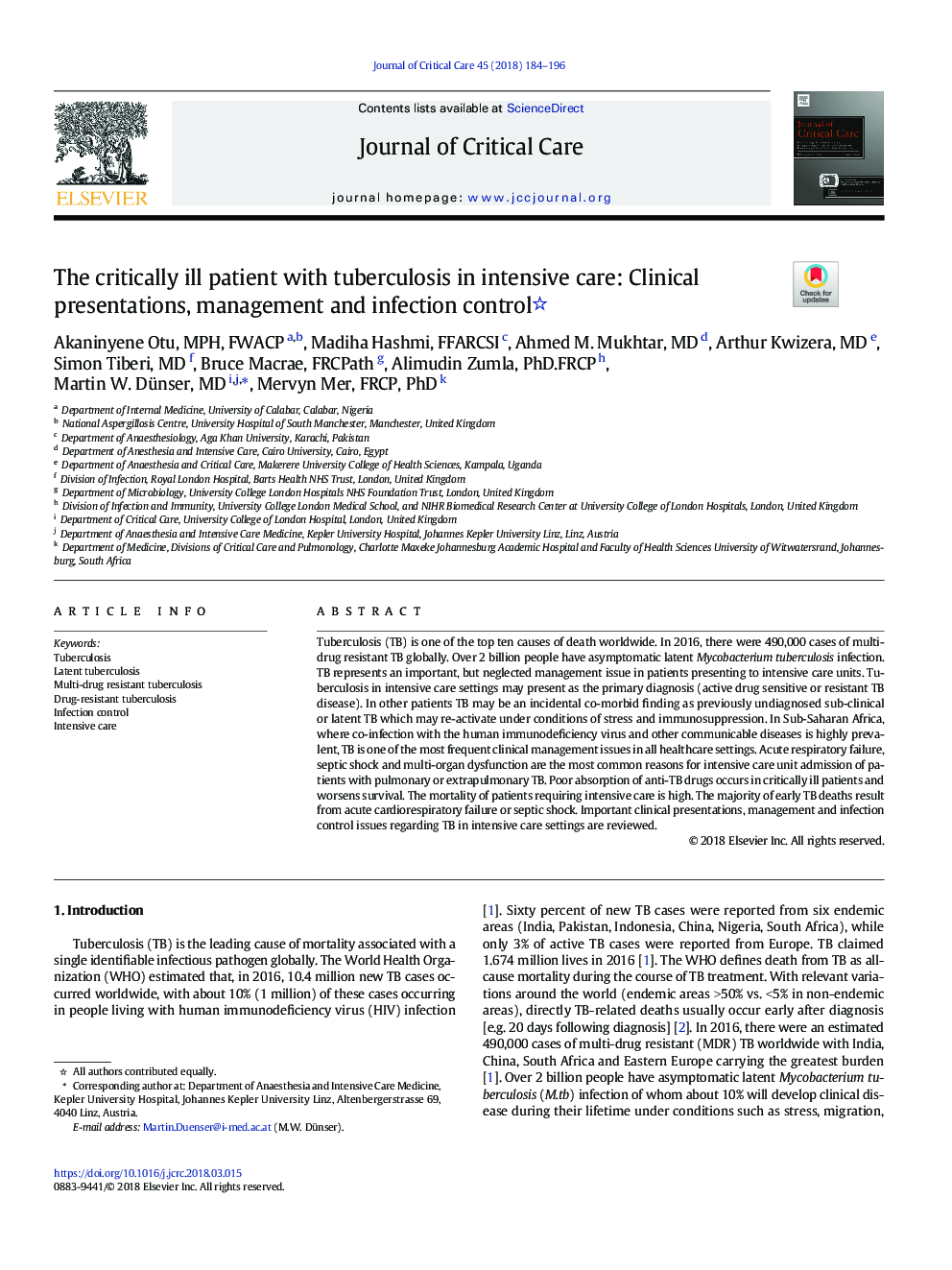| Article ID | Journal | Published Year | Pages | File Type |
|---|---|---|---|---|
| 8620259 | Journal of Critical Care | 2018 | 13 Pages |
Abstract
Tuberculosis (TB) is one of the top ten causes of death worldwide. In 2016, there were 490,000 cases of multi-drug resistant TB globally. Over 2 billion people have asymptomatic latent Mycobacterium tuberculosis infection. TB represents an important, but neglected management issue in patients presenting to intensive care units. Tuberculosis in intensive care settings may present as the primary diagnosis (active drug sensitive or resistant TB disease). In other patients TB may be an incidental co-morbid finding as previously undiagnosed sub-clinical or latent TB which may re-activate under conditions of stress and immunosuppression. In Sub-Saharan Africa, where co-infection with the human immunodeficiency virus and other communicable diseases is highly prevalent, TB is one of the most frequent clinical management issues in all healthcare settings. Acute respiratory failure, septic shock and multi-organ dysfunction are the most common reasons for intensive care unit admission of patients with pulmonary or extrapulmonary TB. Poor absorption of anti-TB drugs occurs in critically ill patients and worsens survival. The mortality of patients requiring intensive care is high. The majority of early TB deaths result from acute cardiorespiratory failure or septic shock. Important clinical presentations, management and infection control issues regarding TB in intensive care settings are reviewed.
Keywords
Related Topics
Health Sciences
Medicine and Dentistry
Anesthesiology and Pain Medicine
Authors
Akaninyene MPH, FWACP, Madiha FFARCSI, Ahmed M. MD, Arthur MD, Simon MD, Bruce FRCPath, Alimudin PhD.FRCP, Martin W. MD, Mervyn FRCP, PhD,
